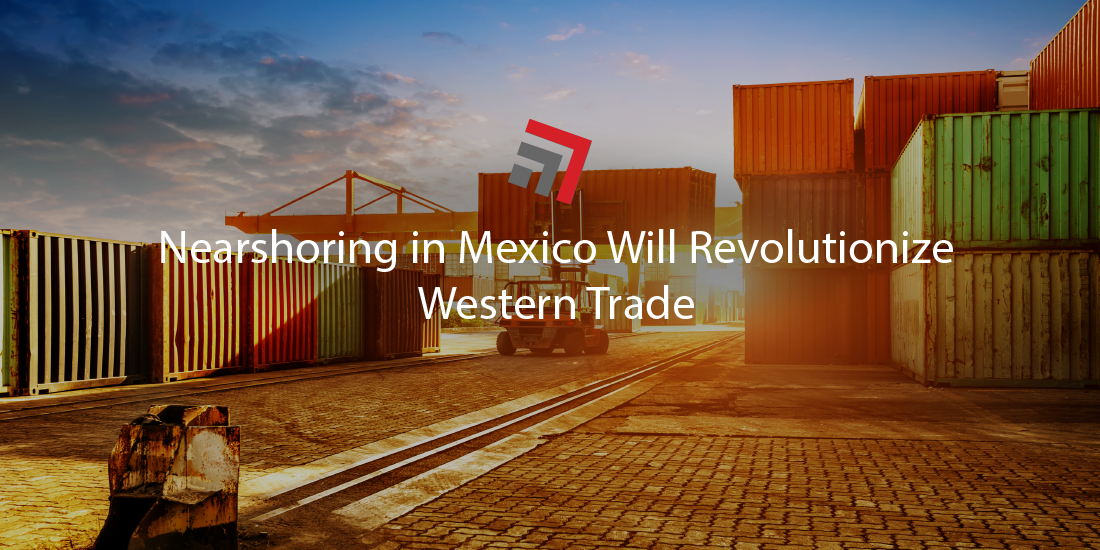For years, the United States and surrounding countries have relied heavily upon Asia – specifically China – for outsourcing manufacturing and production operations. China has positioned themselves as a leader in manufacturing for decades and has remained one of the best options globally for such services due to their speed of output, low costs, and low barrier to entry for U.S. based businesses to outsource. In addition to these factors, the ocean transportation market from Eastern Asia to the Southwestern ports of Los Angeles and Long Beach has become one of the busiest and most robust steamship line routes in the world.
However, recent years have presented plenty of challenges to international supply chains. Every shipper is aware of the catastrophic effect the COVID-19 pandemic had on international shipping, as well as production and manufacturing facilities in countries that were directly impacted by the virus – China perhaps bearing the greatest burden of all (from the standpoint of both the illness and the regulations surrounding it.)
This has caused a once efficient, low-cost, and effective supply chain system between the U.S. and China to slow down, become significantly more expensive, and pose a great deal of risk and unreliability. It’s for these reasons that the West has begun focusing on ways to introduce efficiency and self-sufficiency to their own local and transnational supply chains.
USMCA Replaces NAFTA: Opening a New Frontier for Transnational Trade
In 2020, it was announced that NAFTA would be dissolved in favor of replacing it with USMCA – a trade agreement that would ultimately result in a much more efficient and effective system for establishing trade between Mexico, the United States, and Canada. It was this initial step that paved the way for developments to unfold over the coming years that would ultimately lead to a more self-sufficient Western transnational trade system.
CPKC (Canadian Pacific and Kansas City Southern)
Kansas City Southern was a transportation holding company that owned a significant amount of railroads extending from central U.S. down through Mexico and extending to Panama.
Canadian Pacific Railway was a class I rail system that extended across the entire southern border of Canada and into the northern regions of the United States.
Under the USMCA, the Canadian Pacific Railway acquired Kansas City Southern to create the first and only class I railway system that would extend all the way from Canada, through the U.S., and to southern Mexico and Panama – uniting the three countries’ trade systems in a way that had never been done before.
Nearshoring Enters the Picture
So, having a railway system that connects the three countries certainly makes transnational trade more efficient, but how does it solve any of the issues related to international trade, manufacturing needs, and transportation costs?
For the last decade, Mexico has been fighting to become a global manufacturing leader, and while they likely won’t ever exceed the output of China, their proximity to the U.S., efficiency in production, and low costs have made them an excellent alternative. The establishment of the USMCA, integration of the CP and KCS railways to one unified CPKC route, and COVID-19 pandemic-related challenges with Asian trade routes has opened the door for nearshoring.
Nearshoring involves reallocating manufacturing operations employed by U.S. companies through China over to Mexico. Although this has always been an option, the recent circumstances in international trade have made it a better option than trade with China in many ways.
Moving Forward
Pat Ottensmeyer, the CEO of the KCS prior to the merge into CPKC was quoted as saying, “We need to improve cross-border mobility of goods and people, establish tri-national protocols to reduce supply chain disruptions during any future crisis, strengthen the regional digital economy via expansion of connectivity and optimization of cybersecurity, and promote sustainable economic and social development in the lesser prosperous regions through workforce development and financial inclusion.”
Even before all these things are perfected, the war in Ukraine, sanctions on Russia, continued pressure from COVID-19, Southwestern port congestion and inefficiency, rising international shipping costs, and establishment of the USMCA and CPKC railway have all contributed to making this the golden opportunity for Western-based companies in the U.S. and Canada to nearshore their manufacturing operations to Mexico.
Even if you forget about the massive cost-savings related to using this transnational railway system for trade, companies would experience significant savings on tariffs alone. Mexico’s composite tariffs with the U.S. sit at 0.04% compared to China’s 19.2%. In addition, Mexico’s tax rate of 30% hasn’t changed for 13 years. And finally, Mexico holds 14 free trade agreements with over 50 countries that represent more than 60% of the global GDP.
The continued increase in nearshoring activity pools more money into Mexican businesses and manufacturing operations, causing an economic boom for the country that ultimately leads to additional cost savings and efficiency. At this point in time, the pros far outweigh the cons, and U.S. businesses are being encouraged across the board to invest in nearshoring their manufacturing activities to Mexico and leveraging the numerous benefits of revising their supply chains.



Recent Comments